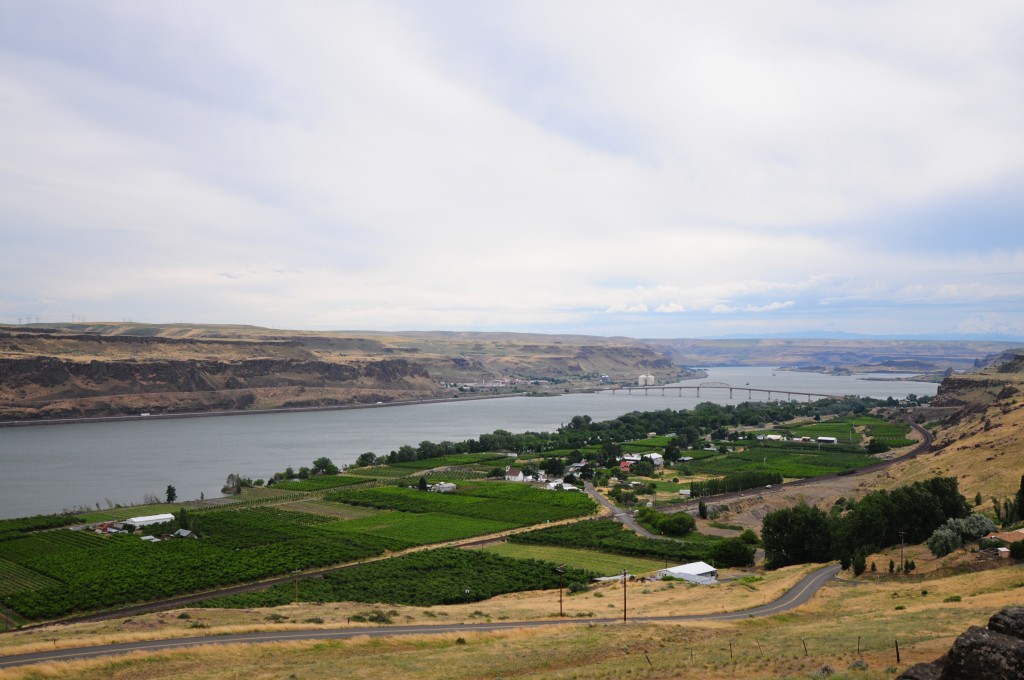This is the Columbia River.
 It is the largest river in the Pacific Northwest, and the fourth largest river in the United States. It winds south from British Columbia into Washington, then runs westward to the Pacific Ocean, forming the border between Washington and Oregon.
It is the largest river in the Pacific Northwest, and the fourth largest river in the United States. It winds south from British Columbia into Washington, then runs westward to the Pacific Ocean, forming the border between Washington and Oregon.
And in 15-20 years, it could be carrying up to one million U.S. gallons (4,000 m3) of highly radioactive waste that has reached it via groundwater contamination from the Hanford Site if cleanup does not progress on schedule.
The Hanford Site is the production site of the plutonium used to create the first nuclear bomb, via the Manhattan Project, and Fat Man, the atomic bomb used over Japan in 1945. During the Cold War era, this site produced plutonium that was used in the over 60,000 weapons in the US arsenal. Production slowed by 1971, although the plant continued to function until the late 1980s. The radioactive waste that was created was stored in 177 underground tanks, which are holding about 52 million gallons of radioactive waste. The tanks were originally supposed to have a life expectancy of 22 years.
In early February of this year,Washington’s Governor Jay Inslee reported that there was small leak in one of the tanks. About a week later, on February 22, it was announced that actually six tanks are leaking.
Cleanup of the waste at the site has been bolstered in the past through $2 billion in federal stimulus funds, but progress has been slow. The site actually started clean up efforts in 1989, and a recent report by the Department of Energy estimates that cleanup will require another 40-50 years. This requires resources from the government, of which budget cuts and competing interests may interfere.
Damage to the environment has probably been occurring since the 1940s. There was a major leak in 1951 that went unreported to the media. Between 1945 and 1951, radionuclides were being released into the air, and entered the food chain through cows grazing in nearby pastures on contaminated grass. There was an estimated 685,000 curies of radioactive iodine-131 released into the water and air between 1944 and 1947, affecting the fish in the Columbia River that were an integral part of the diet of Native American people who lived near the river’s edge.
A mass tort lawsuit has been tied up in the court system since the 1986 release of 19,000 previously unavailable documents detailing the risk of cancers to those who lived downwind of the site.
Initially, it was thought that the land the site was on would be uninhabitable for 150 years due to contamination after cleanup efforts were completed. The latest estimate actually projects that time period now to be 1,000 years.
And what happens if the tanks continue to leak, and no solution is found before all the radioactive material that is left in them leaks out into the river? The reports I am reading online talk about the danger to the Columbia River system, but if it flows out into the ocean, how much of our marine life would be affected if we do not do something? I believe we should keep a watch on this matter, and pressure government representatives to continue to financially support the cleanup effort to get that done as soon as possible.